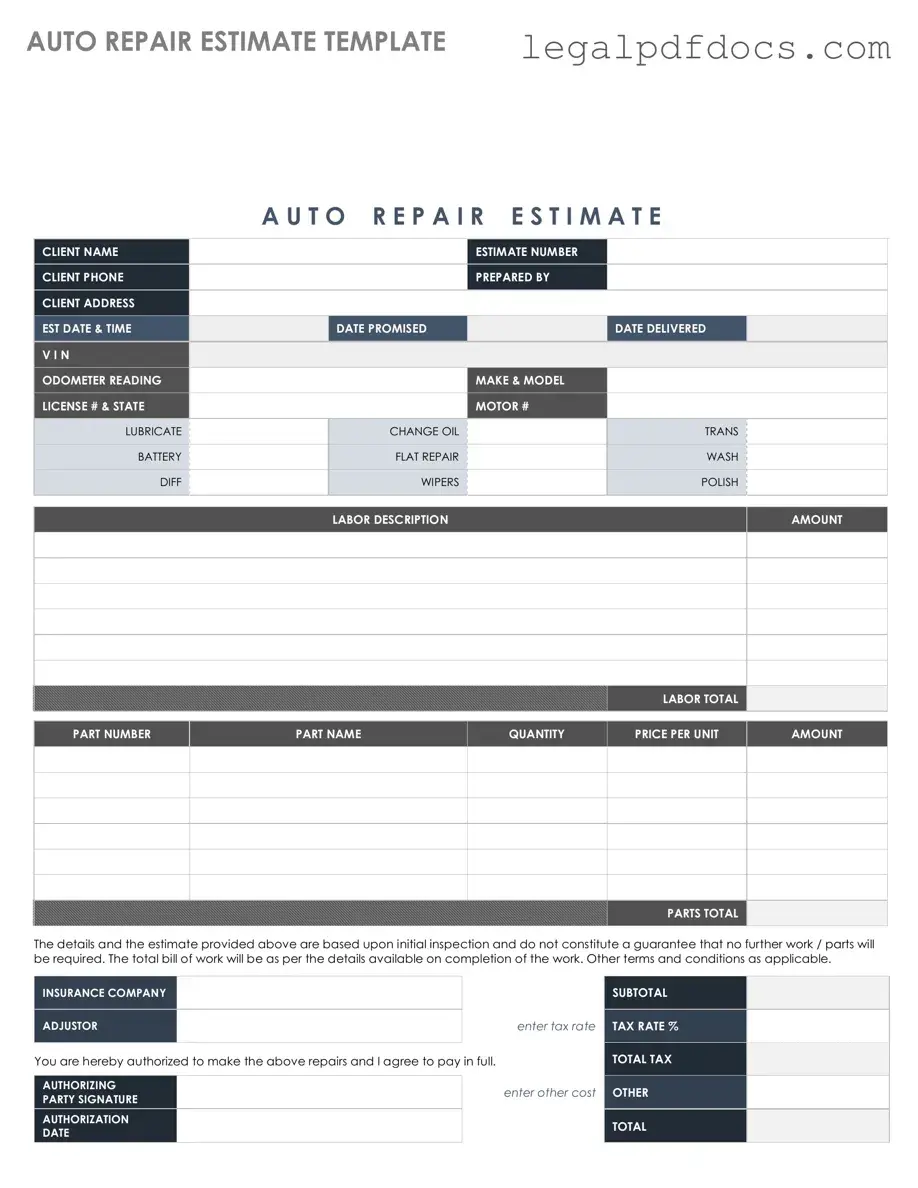Fill Out a Valid Auto Repair Estimate Template
An Auto Repair Estimate form is a document that provides a detailed breakdown of the expected costs associated with vehicle repairs. This form serves as a crucial tool for both customers and auto repair shops, ensuring transparency and clarity regarding the services to be performed. To get started on your auto repair process, fill out the form by clicking the button below.
Open Auto Repair Estimate Editor Here
